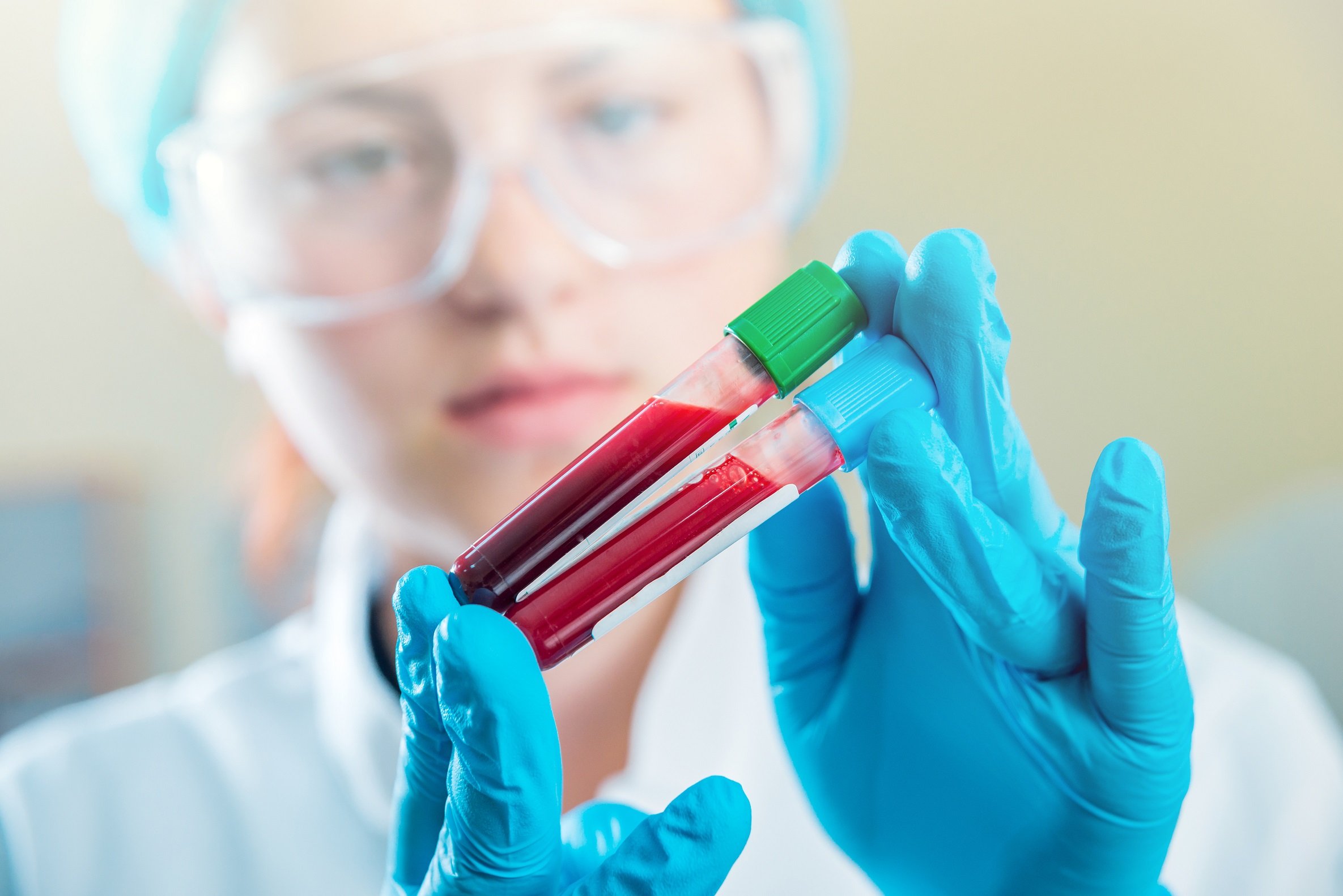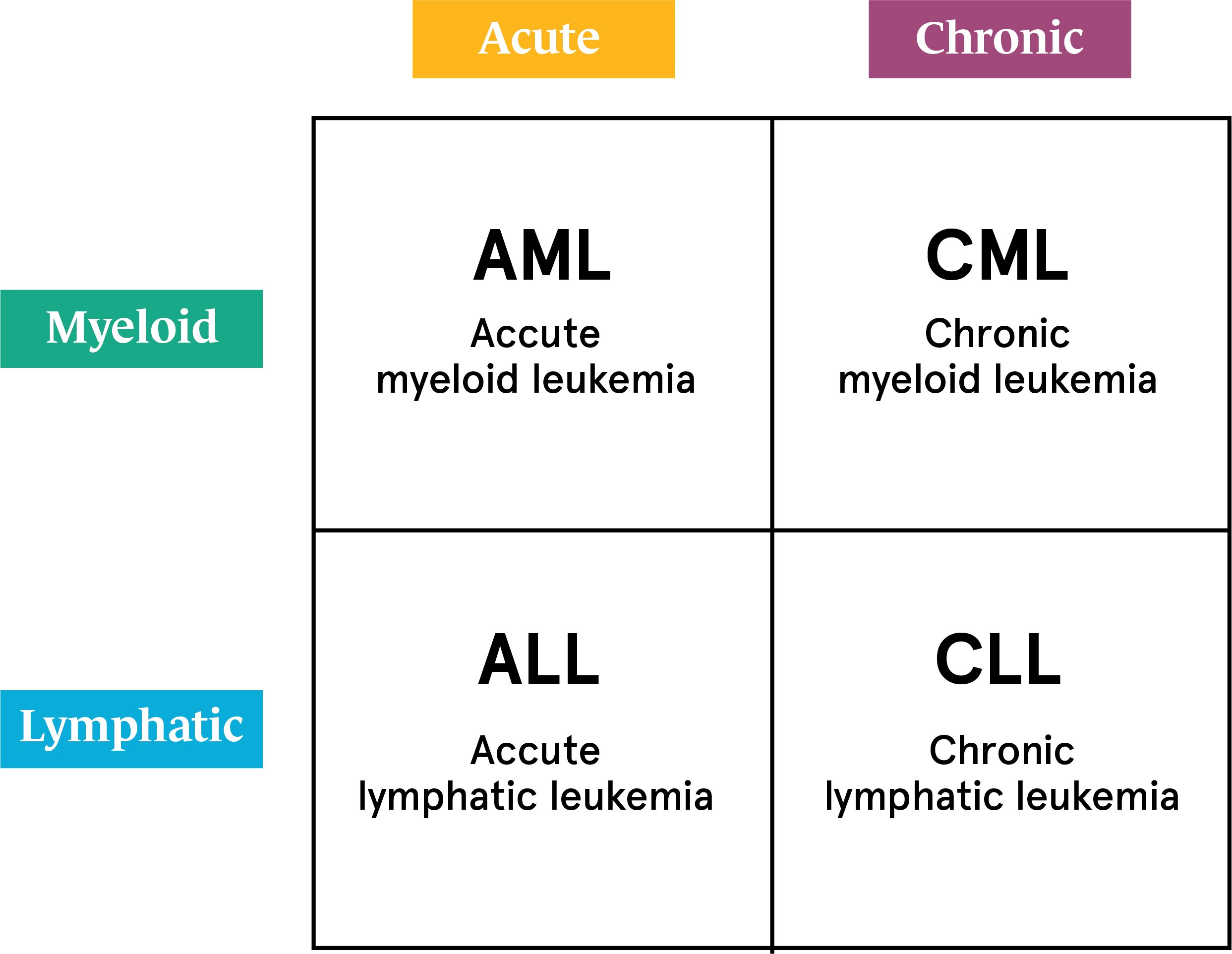Leukemia and Lymphoma: The Differences and Similarities
7 min read

Author: John M. Burke, MD
Many types of cancers start in blood cells. Two common types are leukemia and lymphoma. The two cancers have much in common, but some things make them unique. Knowing the difference between the two and what symptoms to watch out for can help doctors detect cancer early and begin the treatment patients need.
The Blood and Lymphatic Systems
To understand leukemia and lymphoma, you need to know a little about the blood and lymphatic symptoms.
How Blood Cells Are Formed
Several types of blood cells are made in the bone marrow, or the inner part of bones. Blood cells start as stem cells and then develop into specific types of white blood cells called lymphocytes or other blood cells called myeloid cells.
Lymphocytes help fight infections. The main types of lymphocytes are B cells and T cells. B cells make proteins that protect against viruses and other infections. T cells attack and destroy bacteria, viruses, and other potentially harmful invaders. Outside of the bone marrow, lymphocytes are found in the blood or lymph tissue.
What the Lymphatic System Is
The lymphatic system is a group of organs and tissue responsible for creating, moving, and storing lymphocytes in the body. This system is an essential part of the immune system, the system responsible for defending the body against infections. Many parts are involved in the lymphatic system, including adenoids, bone marrow, lymph nodes, spleen, and tonsils. Similar to blood vessels, lymph vessels carry a type of fluid called lymph fluid between different parts of the system.
Lymph nodes are made from lymph tissue, which is mainly composed of lymphocytes. Lymph nodes act as lymph fluid filters, helping fight off infection. Lymph nodes are found in clusters in several parts of the body. Usually, you can’t feel them, but they can become swollen or tender if you have an infection. When this happens, you may feel small lumps or soreness around the lymph nodes, especially those in your armpit, groin area, or neck.
The spleen is located in the upper left of the abdomen near the stomach. It’s the largest organ in the lymphatic system. It is a filter for blood, removing bacteria, viruses, and other invading substances that could cause illness.
Although most lymphocytes are made in the bone marrow, the lymph nodes and spleen can also make lymphocytes. This usually happens in response to an infection.
Leukemia
Blood cancers occur when healthy blood cells start dividing, growing, or spreading abnormally. Leukemia and lymphoma are two types of blood cancers. In leukemia, cancer typically develops in lymphocytes but can also develop in myeloid cells. Leukemia cancer cells can spread throughout the body but primarily affect the bone marrow and blood.
There are several types of leukemia. Some leukemias are acute, which means they grow quickly. Others are chronic, or slow growing. Treatment and outcomes for leukemia vary depending on the type you have. The five-year survival rate for all types of leukemia combined is just under 66%.
Types of leukemia include:
- Acute lymphocytic leukemia, or ALL. This type is typically found in children under age 15. It’s the most common type of childhood leukemia
- Acute myeloid leukemia, or AML. AML is usually found in adults over age 55 but may also affect children.
- Chronic lymphocytic leukemia, or CLL. This type accounts for about a third of all cases of leukemia.
- Chronic myeloid leukemia, CML. CML is a slow-growing cancer that usually affects adults. The risk of developing CML increases with age.
- Chronic myelomonocytic leukemia, or CMML. This type is usually found in people over 60 and rarely found in people under 40.

Lymphoma
Like some forms of leukemia, lymphoma starts in lymphocytes. However, unlike leukemia, lymphoma usually affects lymph nodes and other organs instead of bone marrow. Lymphoma is separated into two main types and several subtypes. The main types of lymphoma are Hodgkin lymphoma and non-Hodgkin lymphoma.
Hodgkin Lymphoma
Hodgkin lymphoma cancer cells typically start to grow in lymphocytes in the lymph nodes, especially those in the armpits, chest, or neck. It’s spread through lymph fluid moving through the lymph vessels. In later stages, it may move into the bloodstream, bone marrow, or organs, such as the liver or lungs.
There are two main kinds of Hodgkin lymphoma, classic Hodgkin lymphoma and nodular lymphocyte-predominant Hodgkin lymphoma. The five-year survival rate for all types of Hodgkin lymphoma combined is about 89%.
Classic Hodgkin lymphoma is the most common type, accounting for about 90% of all Hodgkin lymphoma. The cancer cells in this form of lymphoma are called Reed-Sternberg cells. These cancer cells usually start in B cells.
Swelling in the lymph nodes is very common in classic Hodgkin lymphoma. Healthy immune cells surround the Reed-Sternberg cells in the lymph nodes. The clusters of healthy cells surrounding the cancer cells cause swelling.
There are four subtypes of classic Hodgkin lymphoma:
- Nodular sclerosis Hodgkin lymphoma, or NSCHL. This is the most common type of classic Hodgkin lymphoma. It often occurs in teens and young adults.
- Mixed cellularity Hodgkin lymphoma, or MCCHL. The second most common type, MCCHL, is typically seen in people with human immunodeficiency virus (HIV). However, anyone can develop it. People without HIV who have this type of lymphoma are often children or older adults.
- Lymphocyte-rich Hodgkin lymphoma. This is an uncommon type that often affects only a small number of lymph nodes.
- Lymphocyte-depleted Hodgkin lymphoma. This rare and aggressive type usually affects people with HIV or older adults.
Nodular lymphocyte-predominant Hodgkin lymphoma is much less common than classic Hodgkin lymphoma and typically grows slower.
Non-Hodgkin Lymphoma
Non-Hodgkin lymphoma cancer cells start in lymph tissue. This includes the lymph nodes, as in Hodgkin lymphoma, but it also includes other parts of the body with lymph tissue, such as the adenoids, bone marrow, spleen, and tonsils. Lymph tissue can also be found throughout the digestive tract.
There are several different kinds of non-Hodgkin lymphoma. Some start in B cells, and others start in T cells. Non-Hodgkin lymphoma may be indolent, or slow growing and slow spreading. Or it may be aggressive, which means it grows and spreads quickly. The five-year survival rate for all types of non-Hodgkin lymphoma combined is approximately 74%.
Risk Factors for Leukemia and Lymphoma
No one knows the exact cause of leukemia and lymphoma. However, several risk factors may make you more likely to develop these cancers. It’s good to remember that having risk factors does not mean you will develop cancer. Similarly, people with no risk factors may still develop cancer.
Risk factors for leukemia and lymphoma are similar and include:
- Being male
- Being 60 years old or older
- Having certain viral infections, including the Epstein-Barr virus, hepatitis C, herpesvirus 8, or HIV
- Receiving chemotherapy or radiation therapy in the past
- Having close family members who were diagnosed with leukemia or lymphoma
- Being exposed to certain chemicals, including benzene and some herbicides and pesticides
- Having an autoimmune disorder or weakened immune system due to either a genetic condition, illness, or medication
- Having certain blood disorders
- Receiving high-dose radiation exposure, such as during a nuclear reactor accident
- Smoking
- Taking medication to suppress the immune system
Additional risk factors for leukemia include:
- Being under age 15
- Having certain genetic conditions, including Bloom syndrome, Down syndrome, Klinefelter syndrome, or Trisomy 8
Being between the ages of 15 and 40 is also a risk factor for Hodgkin lymphoma.
Symptoms to Watch Out For
Symptoms of leukemia and lymphoma are similar. Some people will have many symptoms, while others may have very few. Symptoms can also range from mild to severe.
Common symptoms include:
 Bleeding or bruising easily
Bleeding or bruising easily- Bone or joint pain
- Chills
- Extreme tiredness
- Fever
- Flu-like symptoms
- Frequent infections
- Loss of appetite
- Night sweats
- Petechiae, small red spots under the skin
- Swelling or tenderness around the lymph nodes or spleen
- Swollen or bleeding gums
- Unexplained weight loss
Several symptoms of leukemia or lymphoma can be easily mistaken for other common illnesses, such as the flu. Talk with your provider if you have a number of these symptoms or have flu-like symptoms that don’t get better within a week or two.
What You Can Do to Reduce Your Risk
There is no way to fully prevent leukemia or lymphoma. However, you may be able to reduce your risk by:
- Avoiding exposure to chemicals known to cause leukemia, like benzene
- Eating a balanced diet
- Exercising regularly
- Maintaining a healthy weight
- Not smoking, or quitting if you do smoke
Diagnosis and Treatment
Currently, there are no standard ways to screen for leukemia or lymphoma. Instead, detection is based on symptoms. If you have a family history of leukemia or lymphoma, talking to your provider may also help detect cancer early if it develops. Like other cancers, early detection and treatment of leukemia or lymphoma often lead to better outcomes.
Treatments vary depending on the type of leukemia or lymphoma you have.
Common treatments for both of these cancers include:
- Bone marrow or stem cell transplant
- Chemotherapy
- Immunotherapy
- Radiation
- Targeted therapy
A diagnosis of leukemia or lymphoma usually comes with many questions and uncertainties. Rocky Mountain Cancer Centers’ experts provide exceptional care to help you navigate all stages of the cancer journey. Find a clinic near you.
